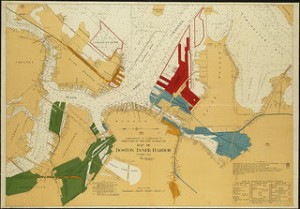These companies know that the unknown will always be more exciting than "some mayo and paprika."
Shared posts
Guess 43 Cartoon Theme Songs in 5 Minutes
Here's a fun challenge. Listen to Carnegie Hall's Ensemble ACJW perform the theme songs from 43 cartoons. See if you can guess what you're hearing! (The list is below the video, and there are plenty of animated hints in the video.)
And here are the answers:
1. Avatar: The Last Airbender 00:00
2. Transformers 00:14
3. Pokemon 00:17
4. Captain Planet 00:23
5. X-Men 00:27
6. Sailor Moon 00:35
7. Neon Genesis Evangelion 00:39
8. Powerpuff Girls 00:43
9. South Park 00:52
10. CatDog 00:56
11. G.I. Joe 01:03
12. Family Guy 01:08
13. Pinky and the Brain 01:15
14. Pink Panther 01:19
15. Dexter's Laboratory 01:24
16. Rescue Rangers 01:31
17. Spiderman 01:37
18. Inspector Gadget 01:44
19. Adventure Time 01:54
20. Babar & Gummi Bears 02:03
21. Madeline 02:07
22. Smurfs 02:13
23. Doug & Rugrats 02:18
24. Care Bears 02:30
25. Dora the Explorer 02:34
26. Rocko's Modern Life 03:39
27. Spongebob Squarepants 02:42
28. Futurama & Magic School Bus 02:47
29. Muppet Babies 02:53
30. The Simpsons 02:57
31. Hey Arnold! & Peanuts 03:02
32. He-Man (Masters of the Universe) 03:10
33. Dragon Ball Z 03:12
34. Thundercats 03:18
35. Teenage Mutant Ninja Turtles 03:23
36. Johnny Bravo 03:32
37. Anamaniacs 03:39
38. Tiny Toon Adventures 03:51
39. Duck Tales 04:01
40. Bobby's World 04:07
41. The Jetsons 04:12
42. The Flintstones 04:17
43. Looney Tunes 04:24
From the Vault: Rammstein Gets All its Teeth Removed and Replaced With Accordions
The Unmaking of Oreo Cookies
"Wizards collect the cookie extract and shovel it into a large tank, which is brought to a centrifuge." The secret, fake story of how Oreo cookies fuel our economy.
We're That Much Closer to Metal 3D Printing, and It's Hypnotizing to Watch
Submitted by: Unknown
idan noyberg + gal bulka attach elephant in the room onto wall plugs

securing the piece to a power point outlet turns the plug into the face of an elephant, with an extended trunk as the cable.
The post idan noyberg + gal bulka attach elephant in the room onto wall plugs appeared first on designboom | architecture & design magazine.
Gif of the Day: AAP Spokesperson Ezaz Khan Slapped by Teena Sharma on India News Program
This is what led up to the slap:
Teena: Inhone kaha hai mai brahman ka beta hun, brahman ki jativad ki rajniti to aap hi kar rahe hain. (They have said I am son of Brahman, they are only doing casticism politics.)
Anchor: Bilkul!
(Absolutely)
Ijaz: Dekhiye...
(Look..)
Teena: ????? ???? saath yahi kehte hai ki mai brahman ka beta hun, yeh rajniti to aap hi kar rahe hain. Fir dono partiyon se aap kaise...
(They only say that I am son of Brahman, they are only doing this politics. Then how can you with both parties...)
Ijaz: Dekhiye aap mujhe jawaab dene dengi ya beech me bolengi,
(Look, will you let me answer or speak in the middle,)
Teena: ????...
Ijaz: ya aap ye rona royengi...
(or will you cry this cry)
Woman: JUST SHUT UP!
Ijaz: AAP, AAP TAMEEZ SE BOLIYE!!!!! AAP BADTAMEEZI KAR RAHI HAIN!!!!!!!
(YOU, YOU SPEAK WITH MANNERS!!! YOU ARE MISBEHAVING!!!!)
[Silence]
Anchor: Mai chahungi ki in dono logon ko audit out kar diya jaye... Teena mai maafi chahungi is tarah ka bartaav aapke saath kiya gaya lekin Aam aadmi ke neta ya fir kisi bhi karya karta ko is cheez ki izajat bilkul bhi nahi di ja sakti ki woh ek mahila ke saath is tarah ki abhadrata kare. Ijaz apko iske liye maafi mangni hogi. Ijaz.
(I will want these both people be audited... Teena I apologize for this kind of behaviour met out to you but Aam Aadmi leader or any worker is not allowed to do such a thing that he does such indecency to a lady. Ijaz for this you will have to apologize. Ijaz.)
Ijaz: Ye zabardasti hai...
(This is coercion...)
Anchor: Izaz aapko maafi maangni padegi.
(Ijaz you will have to apologize.)
Ijaz: Maine koi galat shabd istemaal nahi kiya hai...
(I have not used any wrong word...)
Anchor: Aap TV channel pe baithe hue hain, aapke beech kamre mei yeh behes nahi ho rahi hai. Izaz aapko maafi maangni hogi.
(You are sitting on a TV channel, not debating in your room. Ijaz you will have to apologize.)
Ijaz: Maine ek shabd nahi kaha. ???? ??? ??? jaise shabd istemal kiye hain (slap)
(I have not uttered a single word. ??????? has used words like ????? )
Submitted by: Unknown (via RSS T V)
Coca Cola Wants You to Get Off Your Phone and the "Social Media Cone" is Here to Help
Submitted by: Unknown
10 Japanese Travel Tips for Visiting America
Advice the Japanese give their own countrymen on how to handle the peculiarities of American culture.
Creation of the Day: The Best Version of Flappy Bird is This Flappy Bird in a Box Hack
Ikea Knows How to Advertise
Submitted by: Unknown
Viral Video of the Day: Mo Sochi Mo Problems Summarizes Russia's Dysfunctional Olympics
Submitted by: Unknown
klemens torggler’s hingeless flip-panel door folds open like origami

like magic, the rotating geometric flip-panel door system opens up with momentum.
The post klemens torggler’s hingeless flip-panel door folds open like origami appeared first on designboom | architecture & design magazine.
Lycra, the Fabric of Spacetime
In this video, physics teacher Dan Burns explains gravity using a sheet of lycra as the "fabric of spacetime." It's a classic demo, and you can even build your own circular universe on the cheap! (Apparently spandex works well too.)
There's a brief joke in the video referring to the Coriolis Effect. For more on that, see Australian Toilets Don't Flush Backwards Because of the Coriolis Effect.
(Via Kottke.)
Kids These Days...
around the world – the atlas for today by gestalten

'around the world' does not claim to be a complete record, but instead a cornucopia of universal peculiarities -- a snapshot of what our planet is today,
The post around the world – the atlas for today by gestalten appeared first on designboom | architecture & design magazine.
apple iPad pro with 12.9 inch retina screen in production
Hrishikesh ThiteSo they're also going to have something bigger?

according to the korea times, apple has reportedly commenced production of the upcoming 'iPad pro' with 12.9 inch retina displays for an early 2014 release.
The post apple iPad pro with 12.9 inch retina screen in production appeared first on designboom | architecture & design magazine.
SBB railways debuts starbucks’ first on-board concept store

split between two levels on a high-speed train, the concept store is outfitted with a color palette influenced by coffee shades and tints and provides seating for 50 people.
The post SBB railways debuts starbucks’ first on-board concept store appeared first on designboom | architecture & design magazine.
You Know Those Pointless Emails You Send While Working From Home Just to Prove That You're Working? Yeah, We Do Too...
Ever worked in an office with no cubicles? Everything's so free and open! You feel kind of anxious though, right? Like somebody's watching you at all times. I know what you're thinking: "yeah, 'cause I'm afraid my boss will catch me watching Busty Lesbians 5..."
... Okay, that too, but in all seriousness here: there are lots of things that companies do to "encourage productivity" and "foster creativity." These things usually involve more freedom and flexibility for workers through the use of technology. However, it always feels like those freedoms come with a catch, like bosses never truly relinquish control. They're like the angry girlfriend who tells you "it's fine! Go to the bar and watch the game with your buddies!"
Secretly though, it's not okay, and you're in big trouble when you get home, mister. In this video, Dave Coplin examines the nature of trust and communication between management and workers, and how the technology solutions that companies come up with to provide a more positive work environment can end up providing just the opposite.
Just try not to get distracted by the amazing artwork.
Submitted by: Unknown
5 Ways IBM Watson Changes Computing
IBM Watson has already changed our perception of what computers can do -- it beat the best Jeopardy! champions, and it's being used for medical diagnoses. But what sets Watson apart? What makes it different?
1. It Reads Unstructured Text
When you feed data into a computer, traditionally it has been highly structured -- think a table listing all the U.S. Presidents, with columns for when their terms started and ended. Watson can read that kind of data, sure. But it specializes in reading raw human writing, also known as "unstructured data." You can feed it the biography of a president, and it will pick apart every sentence to learn what facts are contained in there. It will figure out all sorts of information within that huge body of text, and it doesn't require humans to put it all into a structured format first.
This ability to take in unstructured data is a huge strength for Watson. It means that the system can take in new bodies of knowledge quickly. You want it to know about medicine? Feed it the text of every medical journal you can find. You want it to learn Bible trivia? Feed it the Bible.
As we produce lots of information in unstructured form (for example, this blog post!), Watson is ready to consume it and make sense of it. As a trivia junkie, I can't wait to ask Watson some questions of my own.
2. We Train It
In addition to just dumping text into Watson, humans actually train the system to understand what's most important and reliable within the text. For instance, Watson pulled in all of Wikipedia prior to its Jeopardy! appearance, and stored that data offline. But it also had a huge corpus of other knowledge. Humans can tell Watson to trust one source of information (say, a biography of Bob Dylan) more than another (say, his Wikipedia entry). That doesn't mean the system ignores the less-trustworthy data -- but it knows which source to trust if there are conflicting facts.
But going deeper, when we think about Watson as a computing platform, we don't actually program Watson for new applications, per se. Instead of programming the computer, we train the computer using new data and human understanding of a topic. For instance, as a doctor you might train Watson to prefer newer medical journals over older ones -- so that data from the 1800s is taken with a grain of salt.
This shift from programming to training is part of why IBM calls this effort "Cognitive Computing." In the future, we will rely less on rote calculation, and more on interaction and learning.
3. It Asks Clarifying Questions
When Watson handles a tricky question in its current applications (like health care), it comes back with a set of possible results -- but it's also able to ask clarifying questions. It's clever enough to know that with a bit more information, it would be able to rule out an answer, or increase confidence in one of the answers it's already offering.
In health care, this could take the form of ordering a medical test. Presented with a series of facts about a patient, Watson could effectively say, "If you run this blood test, I'll have more confidence in my answer, or you can rule out these diseases." That's a very unusual thing for a computer to do, because it requires the computer to understand both what it knows and what it doesn't know. Knowledge may be power, but knowledge of your limitations is a superpower.
4. It Handles Open-Domain Questions
Most Question Answering systems are programmed to deal with a defined set of question types -- meaning you can only answer certain kinds of questions, phrased in certain ways, in order to get a response. Apple's Siri is an example of a closed-domain system. If I ask Siri a question, it has to be one of those questions Siri has been pre-programmed to answer (that's why so often, Siri gets confused and just offers to Google it for me). It's great when it works, but if you ask something just slightly out of its domain, the system falls apart.
But Watson is different. Watson handles "open-domain" questions, meaning anything you can think of to ask it. It uses Natural Language Processing (NLP) techniques to pick apart the words you give it, in order to "understand" the actual question being asked, even if you ask it in unusual ways. It also handles questions on any topic, combing through all the data it has, looking for the subject you're asking about.
IBM actually published a very helpful FAQ about Watson and IBM's DeepQA Project, a foundational technology used by Watson in generating hypotheses. My favorite question from that FAQ is: Is this going to be like HAL in 2001: A Space Odyssey? The answer is instructive (and I've added emphasis below):
Not exactly. The computer on Star Trek is a more appropriate comparison. The fictional computer system may be viewed as an interactive dialog agent that could answer questions and provide precise information on any topic. A primary goal for DeepQA is to greatly improve information seeking tasks over natural language content but ultimately, we would like to see the underlying technology help make computers more effective at communicating in human terms. Watson uses the DeepQA technology to push the envelope in natural language processing and automatic question answering. A powerful and fluent conversational agent, like the Star Trek computer, is a driving vision for this work.
I'll take the Trek computer over HAL any day. One to beam up!
5. It Shows Its Work
When Watson answers a question, it goes through a bunch of work to get there. First, Watson has to parse what kind of question is being asked, and what kind of answer is being sought. Second, Watson builds a series of hypothetical answers -- building a huge volume of possibilities, even if they're wrong. Third, it tests these hypotheses using a variety of different techniques, mostly based on the quality of the evidence. Finally, it merges and scores the possible answers: using its own question-answering history, the past reliability of various sources, and other techniques, Watson chooses the top answers, and presents them to a person.
But what's transformational here is that the person may then dig in and examine the underlying reasons that Watson chose those answers. During Jeopardy! we just got to see the top answers and a confidence score, but in a less time-sensitive application (like in a doctor's office, or when evaluating a given investment), humans can look at the answers as well as the supporting evidence. Because of this, humans can apply their own experience and expertise to decide whether that evidence is reliable. It's also easy to see how the evidence itself points to new areas of research -- if Watson tells you a medical study gave it confidence that an answer is correct, a doctor might want to go and read the whole study to see what else is in there.
Can Geography Be Radical?
Guernica recently interviewed “radical geographer” Denis Wood about his work and the power of map (a topic we’ve touched on before). Here’s a particularly interesting excerpt:
But I’ve seen maps that I find completely terrifying. Maps of uranium mining and of various illnesses in the Navajo reservations—they’re just insane. They just make you furious. Bill Bunge’s map—which I still think is one of the great maps, the map of where white commuters in Detroit killed black children while going home from work—that’s a terrifying map, and that’s an amazing map. He knew that. They had to fight to get the data from the city. They had to use political pressure to get the time and the exact location of the accidents that killed these kids. They knew what they were looking for. I didn’t have anything to do with that project, so when I saw the map for the first time, it was like, “Oh my god.” It’s so powerful to see maps like that. That’s the power of maps, or one of the powers of maps: to make graphic—and at some level unarguable—some correlative truth. We all knew that people go to and from work. But to lay the two things together reveals something horrible.
(HT: The Daily Dish)
Visual Art 529: This Starry Night is Moving
Submitted by: Unknown
Dear the Oatmeal, I see your Mantis Shrimp post, and I raise you my favorite animal…

The Oatmeal’s post is here. Pretty darn good too. You have to watch this NOVA program on Cuttlefish, if just to see the the ‘Broadclub’ Cuttlefish hypnosis strobe effect.









